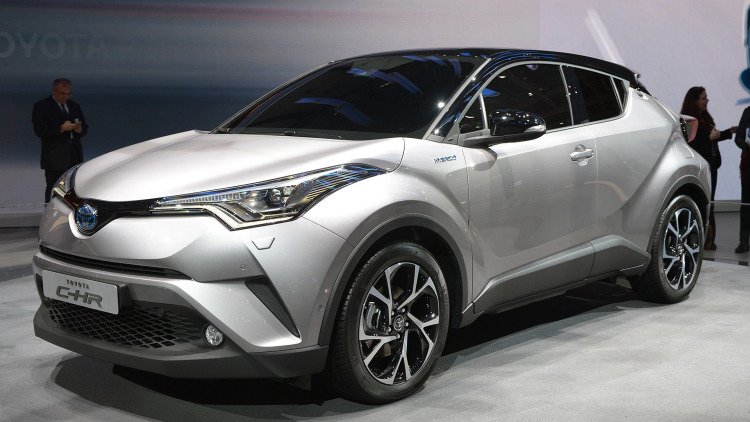Toyota C-HR Stays Sharp From Prototype To Production

Instead, when it arrives in the US, it will be as a Toyota... where it will still likely be a big hit.
The new small CUV made its debut after literally years of teasing concepts, the most recent of which was shown late last year in Los Angeles, where it was badged as a Scion. After seeing that car, it's quite clear that Toyota has strained itself to translate its style to the real world. Up front, there's clear inspiration from the Toyota Auris/Scion iM. But aside from the front, the C-HR's biggest inspiration appears to be the Nissan Juke.
It's like Toyota has tried to go even further, though. Its wheel arches are flared even more aggressively and they feed into a strong character line on the lower portion of the doors. In back, Toyota's designers seem to have just rotated the Juke's taillights 180 degrees while they sit below an extremely fast rear window. Said window is integrated into today's latest design trend, a floating roof.
Mechanically, the C-HR rides atop Toyota's New Global Architecture, which is Japan's answer to Volkswagen's MQB architecture. Power comes from a hybrid drivetrain, good for a relaxed 120 horsepower. If you don't want hybrid power, Toyota will sell the C-HR with the Euro-market Auris' turbo 1.2-liter engine, but we almost certainly won't see that here in the US. Instead, American drivers will probably be left with nothing but a 2.0-liter, naturally aspirated four-cylinder. That engine will be exclusively paired with a continuously variable transmission that sends power to either the front- or to all four wheels. So there's Juke inspiration, but not in the driving character.
Toyota says it will build the C-HR Hybrid in Turkey. We don't know if that facility will handle US-market vehicles or just Europe, but we wouldn't be surprised to see additional facilities come online to produce this stylish little bugger.
Related News


